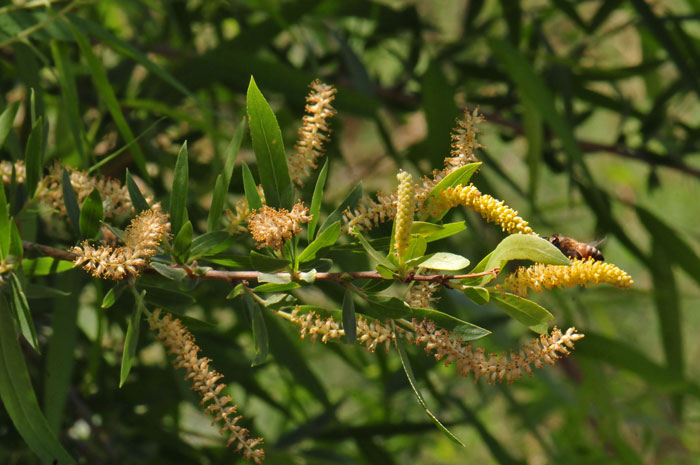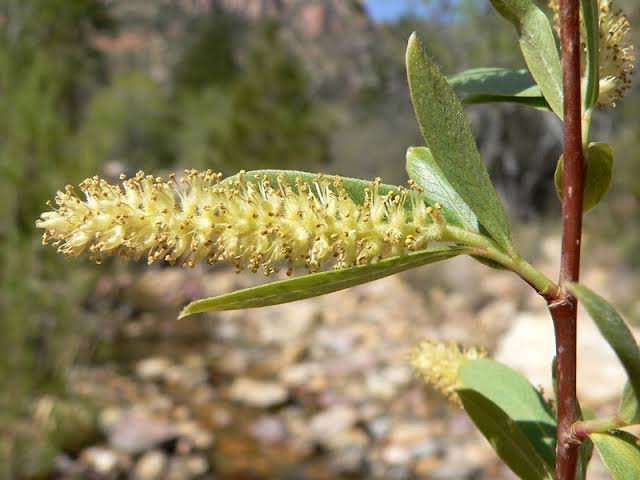
The Salicaceae, the willow family, has the following charateristics:
- Diversity: Contains around 56 genera and over 1,000 species.
- Habitat: Found in temperate and subtropical regions around the world, often near water bodies such as rivers, lakes, and streams.
- Deciduous Trees and Shrubs: Most species are deciduous, shedding their leaves seasonally. They can range from small shrubs to large trees.
- Simple Leaves: Often alternate.
- Catkins: Produce clusters of flowers called catkins, which often appear before or with the leaves in spring.
- Dioecious or Monoecious: Salicaceae species can be either dioecious, meaning male and female flowers are borne on separate plants, or monoecious, meaning both male and female flowers are found on the same plant.
- Wind-Pollinated: Flowers are typically wind-pollinated, lacking showy petals or attractive scent.
- Cultural Importance: Often cultivated for erosion control and for their flexible branches used in basket weaving. Also cultivated for timber production, papermaking, and as ornamental trees.
- Adaptations to Moist Environments: Many species have adaptations to moist environments, such as the ability to tolerate waterlogged soil or even grow in aquatic habitats.
- Chemical Properties: Some species contain salicylates, compounds related to aspirin, which can have medicinal properties.
Jepson key to Salicaceae
Video describing identification of willows
